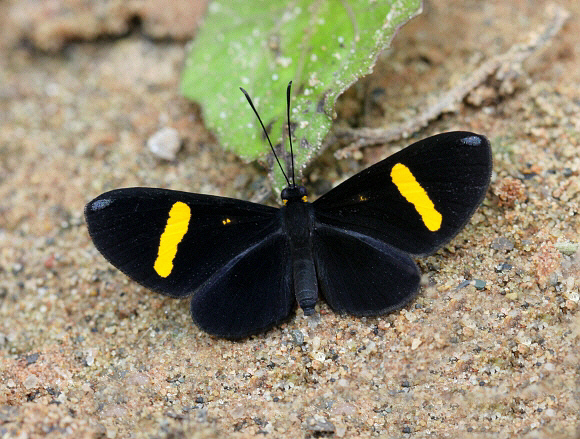 Chamaelimnas tircis iaeris, Satipo, Peru – Adrian Hoskins
Chamaelimnas tircis iaeris, Satipo, Peru – Adrian Hoskins
Introduction
There are 6 Chamaelimnas species. All have velvety black wings with a large diagonal yellow patch on the forewings. Several species such as cercides and briola have additional yellow patches. The aptly named splendens has a bright orange band on the forewings and a large patch of metallic blue at the base of the hindwings.
Chamaelimnas are very similar in appearance to several other metalmarks in the genera Xenandra, Melanis and Setabis. There are also several Pyrgine skippers and numerous day-flying moths from the families Geometridae, Notodontidae and Arctiidae which share a similar pattern. Chamaelimnas can be distinguished from all of these by their resting posture and wing shape, and by the very long, straight and slightly clubbed antennae.
When the legendary naturalist and explorer Henry Walter Bates discovered tircis and iaeris he noted differences in their markings and thought they were separate species. Subsequent analysis however has resulted in iaeris being reduced in rank to a subspecies of tircis.
Chamaelimnas tircis is found in the foothills of the eastern Andes in Ecuador, Peru and Bolivia; and in the upper Amazon basin. It also occurs in Paraguay and probably in Argentina. Subspecies iaeris is found in southern Brazil, Peru and Bolivia.
Habitats
This species inhabits primary rainforest at altitudes between about 200-800m.
Lifecycle
To be completed.
Adult behaviour
Males are usually encountered as singletons basking on foliage or on the ground. They adopt the typical Riodinid resting posture, with their wings held flat, and the antennae held close together and directed forward. I have not observed the female, which is rare in collections and probably spends most of its life high in the tree tops.
